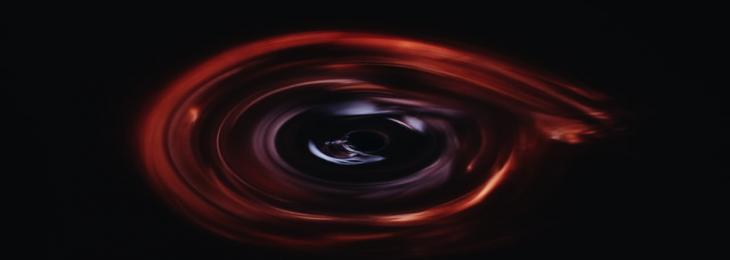Supermassive Black Holes could be spawned by collapsing Dark Matter Halos
Jun, 2021 - By SMI

Share
If dark matter elements can interrelate with one another, the breaking up halo will shrink and create a viscidness that slows its spin that would eventually cause a black hole seed to form, which can develop swiftly by feeding on ordinary matter in the region, such as dust and gas.
Supermassive black holes are theorized to expand slowly over billions of years as they absorb materials from their surroundings. But, if that's the case, how did they manifest themselves so early in the history of the universe. Researchers have now proposed a novel origin story for them is that the black hole seeds formed when self-interacting dark matter halos collide.
Supermassive black holes, which have millions or billions of times the mass of the Sun, can be found at the centre of most galaxies.
The most widely accepted explanation for how they formed is that collapsing primordial gas pockets into the tiny black hole that is also termed as a seed which developed over billions of years as they joined with other black holes, slurped up dust, swallowed stars, and gas, and anything else that came too close.
Recent discoveries, however, have cast doubt on that theory. At great distances, more and more supermassive black holes have been identified, indicating that they were well-established during the first few hundred million years after the Big Bang. Therefore, according to the present model, that shouldn't have given them enough time to grow so large.
As a result, astronomers have presented alternate theories. According to one recent study, early supermassive black holes were formed when gigantic primordial stars tens of thousands of times the mass of the Sun blew supernova.
A team lead by experts from the University of California, Riverside, established a novel concept in this recent study. It's based on dark matter, the enigmatic substance that's supposed to make up the majority of everything in the universe and binds galaxies together with its gravitational pull.
Dark matter, would naturally group into halos through the universe. Under definite conditions, these dark matter halos could get dark enough to break down under the gravity of their own, forming a seed-like black hole, according to the UCR team.
Share
Stratagem Market Insights
533 Airport Boulevard, Suite 400, Burlingame, CA 94010, United States
Delivery Center
403, 4th Floor, Bremen Business Center
Aundh, Pune, Maharashtra 411007
India
